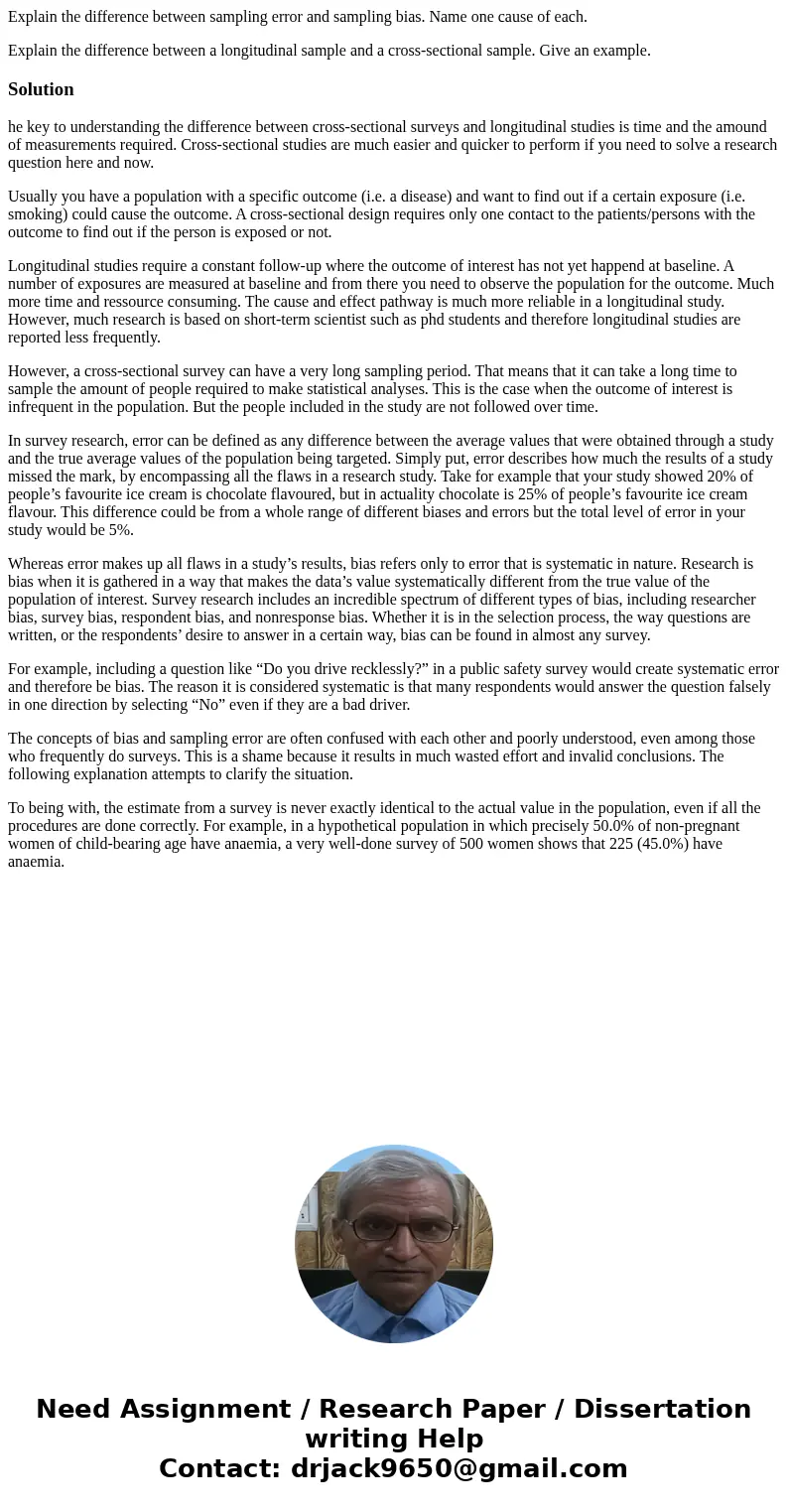Explain the difference between sampling error and sampling b
Explain the difference between sampling error and sampling bias. Name one cause of each.
Explain the difference between a longitudinal sample and a cross-sectional sample. Give an example.
Solution
he key to understanding the difference between cross-sectional surveys and longitudinal studies is time and the amound of measurements required. Cross-sectional studies are much easier and quicker to perform if you need to solve a research question here and now.
Usually you have a population with a specific outcome (i.e. a disease) and want to find out if a certain exposure (i.e. smoking) could cause the outcome. A cross-sectional design requires only one contact to the patients/persons with the outcome to find out if the person is exposed or not.
Longitudinal studies require a constant follow-up where the outcome of interest has not yet happend at baseline. A number of exposures are measured at baseline and from there you need to observe the population for the outcome. Much more time and ressource consuming. The cause and effect pathway is much more reliable in a longitudinal study. However, much research is based on short-term scientist such as phd students and therefore longitudinal studies are reported less frequently.
However, a cross-sectional survey can have a very long sampling period. That means that it can take a long time to sample the amount of people required to make statistical analyses. This is the case when the outcome of interest is infrequent in the population. But the people included in the study are not followed over time.
In survey research, error can be defined as any difference between the average values that were obtained through a study and the true average values of the population being targeted. Simply put, error describes how much the results of a study missed the mark, by encompassing all the flaws in a research study. Take for example that your study showed 20% of people’s favourite ice cream is chocolate flavoured, but in actuality chocolate is 25% of people’s favourite ice cream flavour. This difference could be from a whole range of different biases and errors but the total level of error in your study would be 5%.
Whereas error makes up all flaws in a study’s results, bias refers only to error that is systematic in nature. Research is bias when it is gathered in a way that makes the data’s value systematically different from the true value of the population of interest. Survey research includes an incredible spectrum of different types of bias, including researcher bias, survey bias, respondent bias, and nonresponse bias. Whether it is in the selection process, the way questions are written, or the respondents’ desire to answer in a certain way, bias can be found in almost any survey.
For example, including a question like “Do you drive recklessly?” in a public safety survey would create systematic error and therefore be bias. The reason it is considered systematic is that many respondents would answer the question falsely in one direction by selecting “No” even if they are a bad driver.
The concepts of bias and sampling error are often confused with each other and poorly understood, even among those who frequently do surveys. This is a shame because it results in much wasted effort and invalid conclusions. The following explanation attempts to clarify the situation.
To being with, the estimate from a survey is never exactly identical to the actual value in the population, even if all the procedures are done correctly. For example, in a hypothetical population in which precisely 50.0% of non-pregnant women of child-bearing age have anaemia, a very well-done survey of 500 women shows that 225 (45.0%) have anaemia.

 Homework Sourse
Homework Sourse